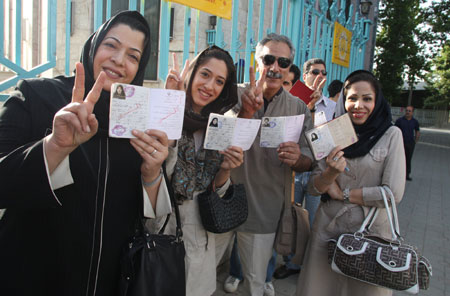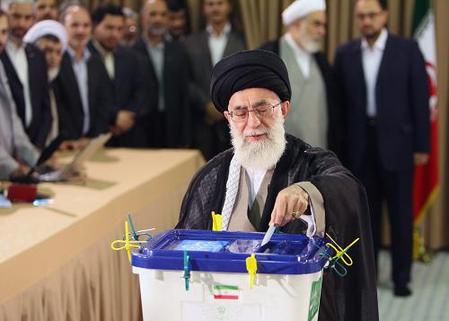Iranians began voting Friday morning in a presidential election which pits incumbent President Mahmoud Ahmadinejad against three other candidates.
There are 46.2 million eligible voters for this year's presidential election. A total of 45,713 ballot boxes have been set up throughout the country.
 |
|
Voters are waiting for casting their ballots outside a polling station in Tehran June 12, 2009. [Xinhua] |
Polling stations, which opened at 8 a.m. local time (0330 GMT), will close at 18:00 p.m. (1330 GMT) and could remain open till midnight in case of a high voter turnout.
"Hopefully, the most qualified and competent person would be elected as the head of the executive branch of the government," Iran's Supreme Leader Ayatollah Ali Khamenei said after casting his ballot.
He also praised the "passionate and peaceful" election campaign and called on Iranians to use their right to vote as a way to fulfill "a religious and logical duty".
In addition to the incumbent president, former Prime Minister Mir-Hossein Mousavi, former Parliament Speaker Mehdi Karroubi and former Revolutionary Guards chief Mohsen Rezaei also run for the post.
Iranian police have taken strict security measures at polling stations to prevent a possible outbreak of violence. Police cars are seen patrolling the streets in Tehran.
 |
|
Iran's Supreme Leader Ayatollah Ali Khamenei casts his ballot during the Iranian presidential election in Tehran June 12, 2009. [Xinhua] |
The voter turnout is expected to be higher than those registered in the last presidential elections in 2005 -- 63 percent in the first round and about 48 percent in the run-off.
According to Iran's election law, any candidate who gains over 50 percent of the vote wins the presidential election. If no winner emerges in the first round, the top two candidates will contest in a run-off one week later.
(Xinhua News Agency June 12, 2009)